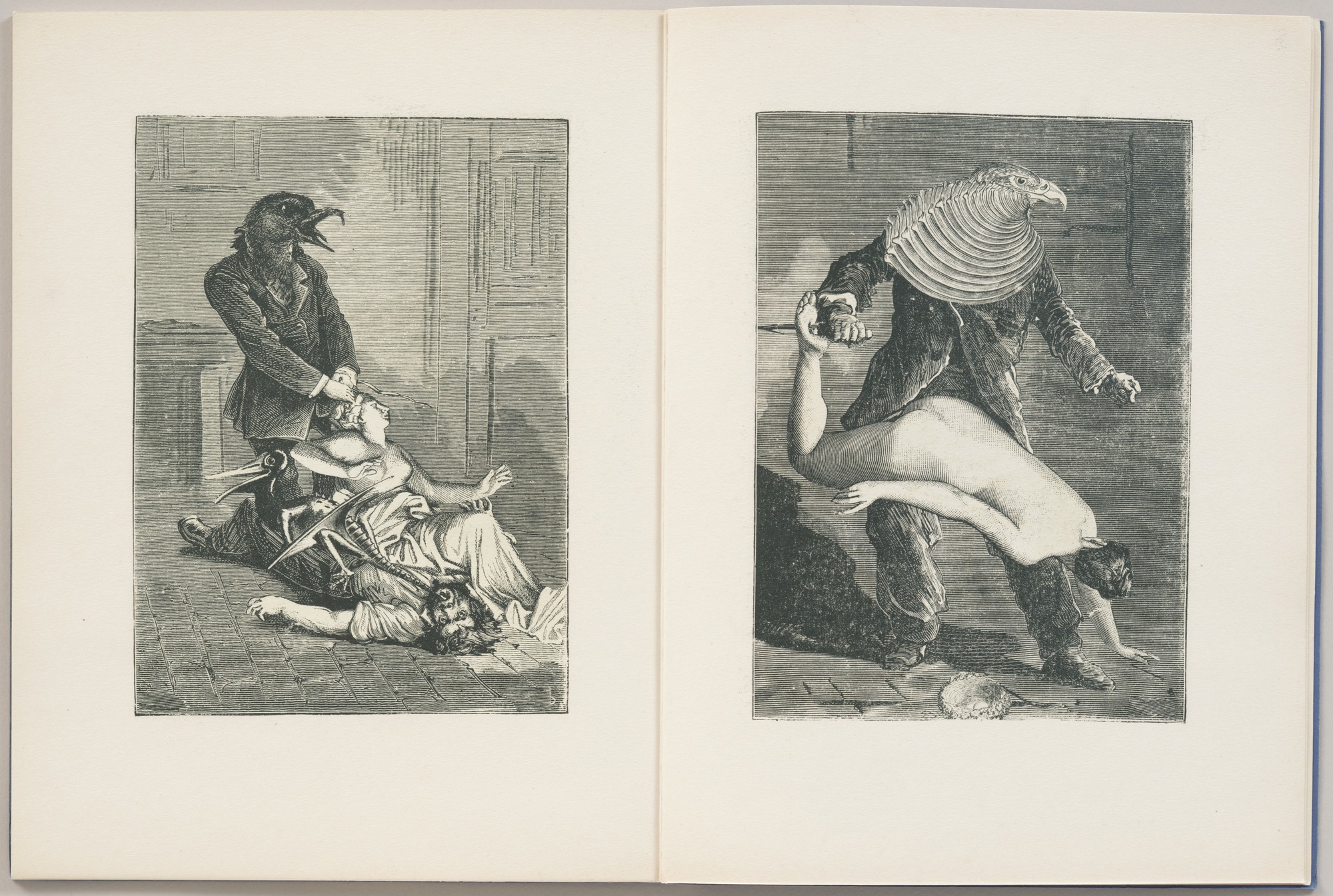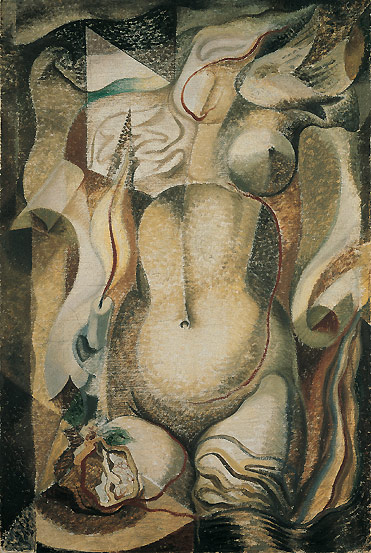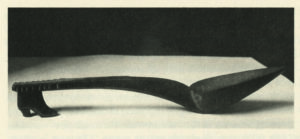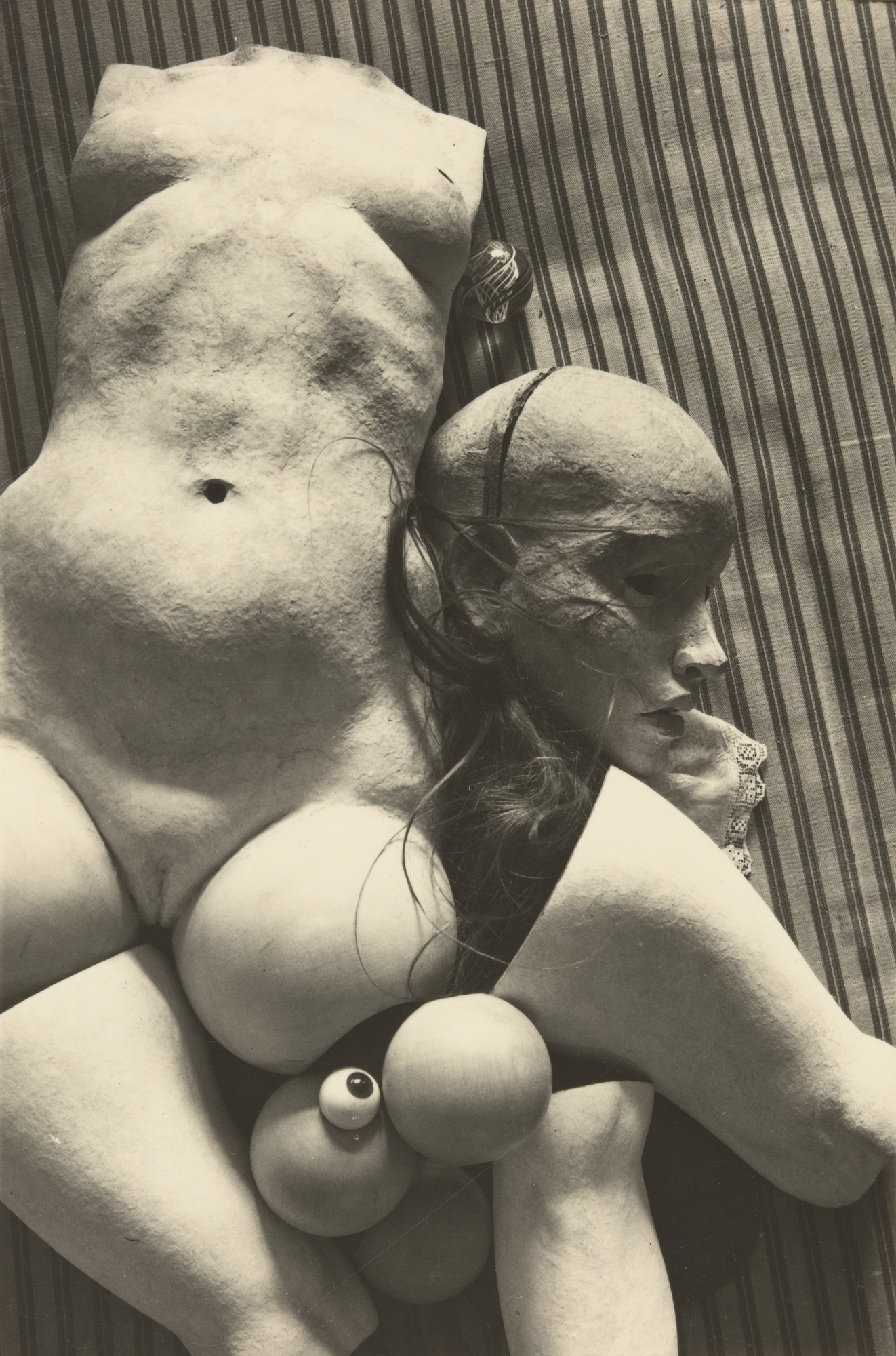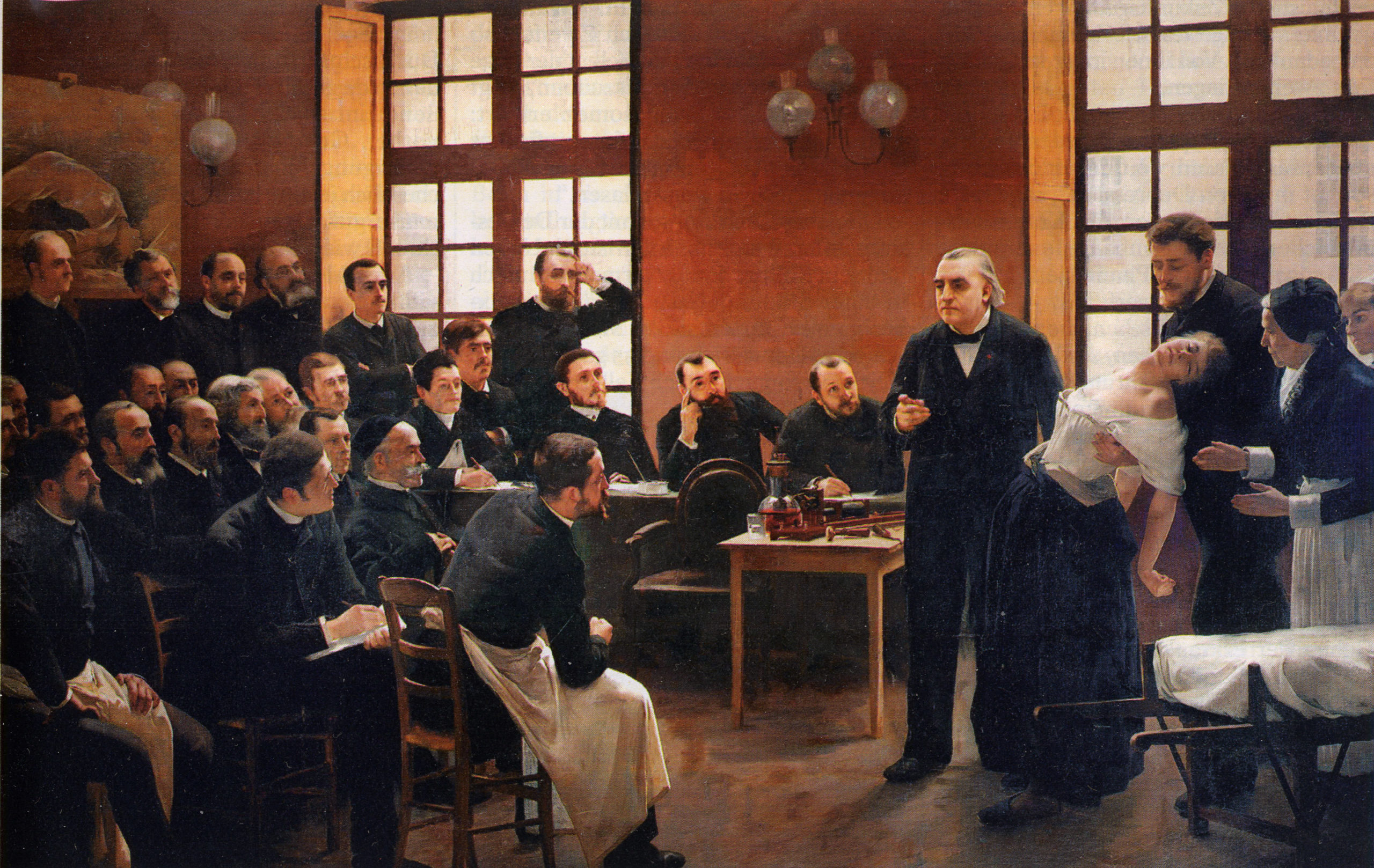
André Brouillet, Clinical Lesson at La Salpêtrière, 1887, oil on canvas, 290 x 430 cm (University of Paris). This painting of Jean Charcot demonstrating hypnosis hung in Freud’s study.
From its inception, Surrealism was closely involved with contemporary developments in psychology and psychoanalysis. The movement’s leader André Breton had studied medicine and served in a mental hospital during World War I, an experience that directly affected Surrealism’s development. The Surrealists’ initial understanding of human psychology was largely informed by the work of the French psychologists Jean Charcot and Pierre Janet. Particularly influential for the development of early Surrealist automatic techniques were their studies of hypnosis and what was called psychological automatism, the involuntary actions and processes not under the control of the conscious mind—for example, dreaming. The German artist Max Ernst brought detailed knowledge of Sigmund Freud’s more developed theories of the unconscious to the group, and these became the greatest influence on Surrealism. As Freud’s writings were translated into French, the Surrealists’ understanding and deployment of his ideas became increasingly sophisticated and complex.
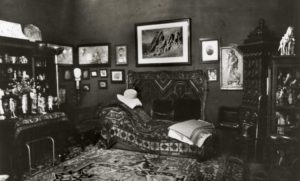
Sigmund Freud’s consulting room in Vienna, 1938 (photo: Edmund Engelman)
Freud’s theories of the mind
Certain general concepts associated with psychoanalysis are useful for considering Surrealist art. The most important of these is the notion of the unconscious as a repository for thoughts and feelings that are generally unavailable to consciousness. Freud considered dreams to be coded expressions of unconscious fears, desires, and conflicts that could be deciphered and potentially resolved through analysis. In Freud’s view, neurosis was typically the result of unresolved conflicts and disruptions in early childhood psychosexual development. Sexuality, erotic desire, and violence are at the heart of Freudian theories of the mind. What lies buried in the unconscious are powerful and instinctual drives, repressed by civilization and rationality, which if inadequately resolved are detrimental to the individual’s, and ultimately society’s, mental health.
This notion informed Surrealist attitudes toward love and sexuality, which were primary subjects of their creative work. They were also a major focus of political statements and activities opposing conventional morality and constraints on the free expression of sexuality. It should be noted, however, that the Surrealist group’s promotion of liberated sexuality was limited and excluded male homosexuality.
Conflict and violence
Freud’s conception of the unconscious as a site of primal violence and conflict repressed from consciousness played a role in the work of many Surrealist artists. Max Ernst and André Masson, in particular, frequently employed images of sexual violence. Surrealist automatic techniques were thought to reveal unconscious thoughts and desires; thus, the repetition of erotic imagery and themes of violence that appear in many works were considered manifestations of what Ernst described as his “obsessions.” The dismembered and fragmented female nudes, knives, fish, birds, and cut pomegranates that populate Masson’s early Surrealist works similarly suggest the artist’s unconscious preoccupations.
It has often been noticed that the Surrealists’ conscious pursuit of the unconscious, as well as their occasional very literal conformity to Freud’s theories, casts doubt on the success of their efforts to access unconscious thoughts. From the beginning, many critics complained that Surrealist artists merely illustrated psychological theories, rather than truly expressing the profound depths of their unconscious.
The unconscious as creative source
André Breton explicitly rejected attempts to read Surrealist art as revealing the individual artists’ psychological history. Also, unlike Freud and his fellow psychoanalysts, the Surrealists had no interest in the therapeutic potential of Freud’s theories. They were interested in the unconscious as a creative source, not in the possibility of healing neurosis through psychoanalytic therapy.
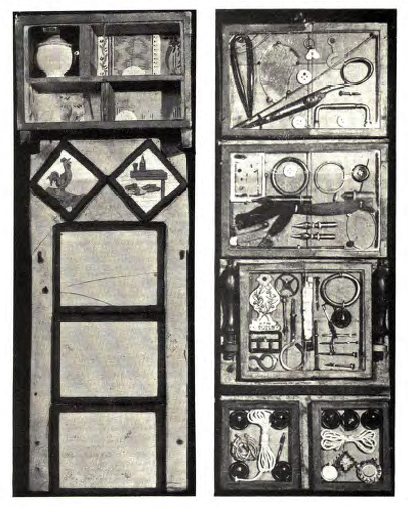
Photographs of objects made by the mentally ill published in La Révolution Surréaliste, no. 12 (15 December 1929), pp. 42-43
In fact, the Surrealists celebrated insanity as a form of mental liberation and published illustrations of objects made by patients in mental hospitals. They believed that to cure the mentally ill was to make them conform to stifling social conventions. In the Surrealists’ view, the insane created their own reality to satisfy their deepest desires, and as a result they were happy. The Surrealist goal was not to promote so-called normal psychological lives, but on the contrary to make reality accord with the “abnormality” of unconscious desires.
Displacement and condensation
Several Freudian concepts are useful tools for considering the strategies employed in Surrealist art. In his early work Freud concluded that dreams were often pictorial representations constructed, like poetry, by means of metaphor. The unconscious thoughts and desires at the heart of the dream were subjected to a form of censorship, which transformed their initial content into metaphor by the mechanisms of displacement and condensation.

Salvador Dalí, The Great Masturbator, 1929, oil on canvas, 110 x 150 cm (Museo Nacional Centro de Art Reina Sofia, Madrid)
Displacement, which Freud considered the most striking achievement of dream work, is the mechanism of substituting symbols for objects or concepts to disguise the true nature of dream thoughts. Among the common dream symbols he listed were knives and boxes as symbols for male and female genitalia, respectively.
In the mechanism of condensation, logical connections are lost or rearranged, and multiple associations may be connected to one object or image. Freud believed that the meaning of any given dream was unique, and only the dreamer with the help of an analyst could decipher the underlying thoughts and their significance. He also noted, however, that language and culture often determined dream symbolism and that there were common symbols to be found in many individuals’ dreams, as well as in fairytales and folklore.
Fetishism
Displacement and condensation are operative in other mental processes and are central to the Freudian concept of the fetish. A fetish is any object that is thought to embody or contain supernatural powers, and in Freud’s theory it is typically a phallic substitute. Freud described the genesis of fetishism as the moment when the male child sees that his mother has no penis. This recognition is deeply disturbing because the child assumes that she must have once had a penis and later lost it, and by implication he thinks that he too may be castrated.
The child denies this horrifying possibility by essentially granting his mother a substitute phallus in the form of another object, often, Freud theorized, one he saw just after he recognized his mother’s lack of penis, such as a foot or shoe. This becomes a fetish object, which is both highly desirable and a source of great anxiety, representing as it does both the fear of loss and the satisfying replacement of the lost object.
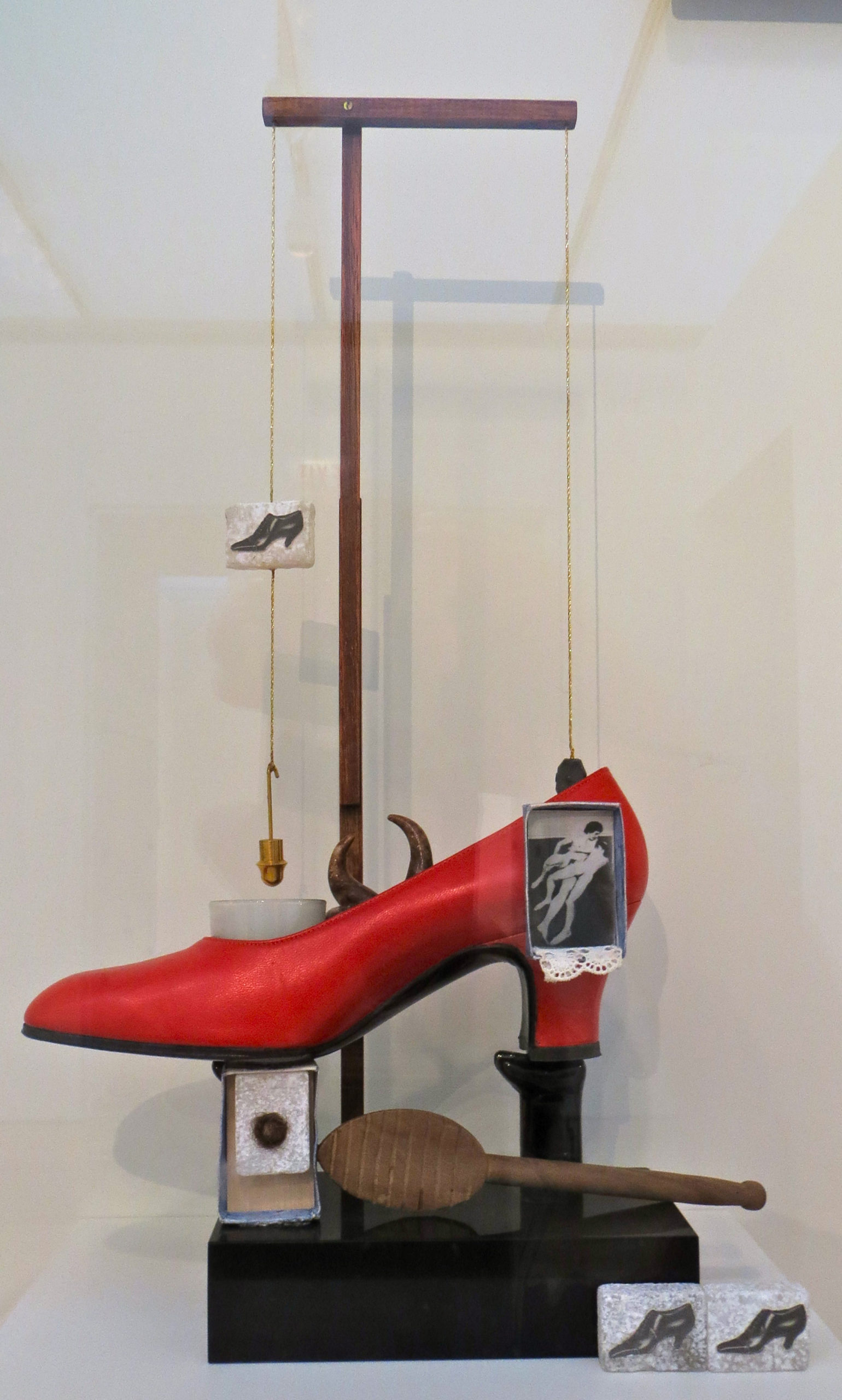
Salvador Dalí, Surrealist Object Functioning Symbolically — Gala’s Shoe, 1931 (1973 edition), Assemblage with shoe, marble, photographs, glass, was, hair, scraper, and gibbet. 48.3 x 27.9 x 9.4 cm (The Dalí Museum, St. Petersburg, FL; photo: ellenm1, CC BY-NC 2.0)
Salvador Dalí, whose art often directly reflects Freudian theories, was influenced by Freud’s concept of the fetish when he developed the idea of Surrealist objects, and many of his own works include shoes and other common fetishes.
Breton similarly described the marvelous significance of discovering an ashtray in the form of a spoon attached to a shoe. Not all Surrealist objects have such immediately recognizable Freudian symbolism, but the complex depths of feeling that they arouse in their finders and makers, and potentially in their viewers as well, indicate their genesis in the depths of the erotic unconscious.
Jacques Lacan
Art historians have also been interested in the psychoanalytic theories of Jacques Lacan, who as a young man was closely associated with the Surrealists. Lacan’s ideas on the formative role of vision in the psychological development of individual identity have been suggestively employed to analyze Surrealist artworks, particularly photography, as representing a form of pre-linguistic and thus pre-conscious experience.
Although Lacan’s writings are much less accessible to general understanding than Freud’s, they provide useful theoretical material for the investigation of a variety of topics that engaged Surrealist artists, including the psychology of representation, the disjunctions between visual and bodily experience, and the conflicts between desire and repressive social forms, particularly language.
Additional resources:
Read more about Une Semaine de Bonté at the Musée d’Orsay
Look through scans of La Révolution surréaliste at the National Library of France

